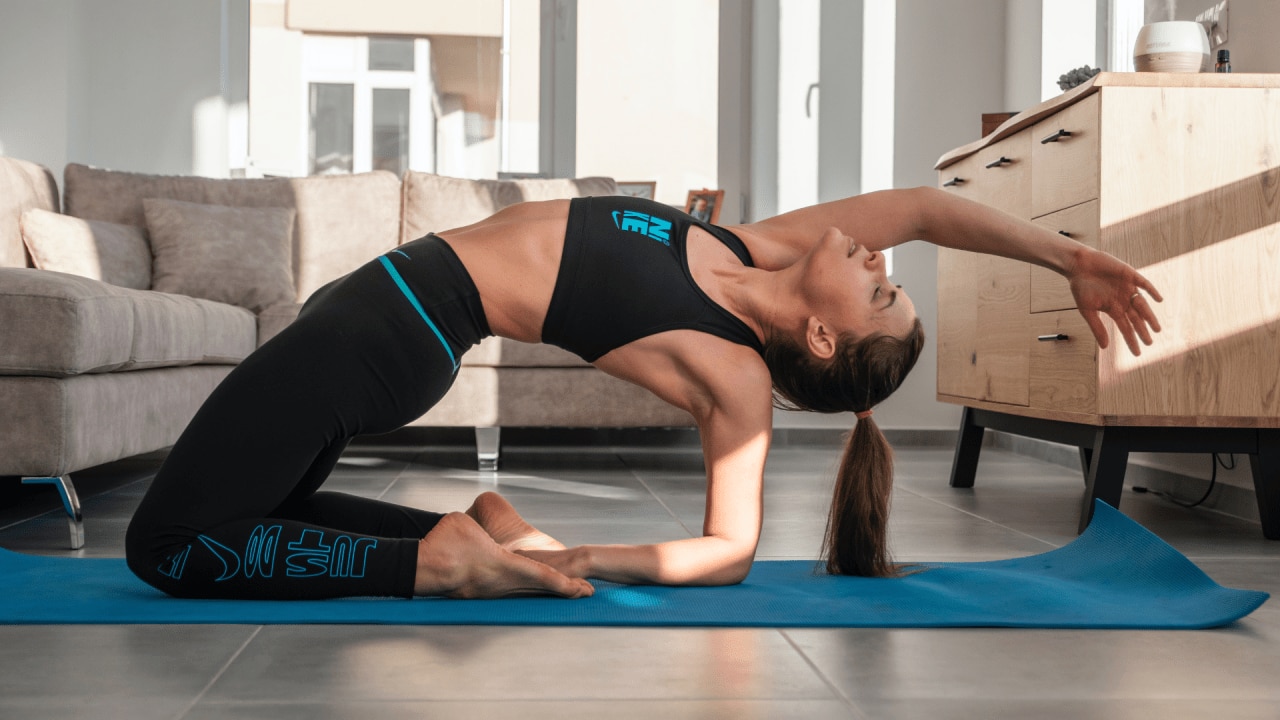
Nothing burns body fat faster than the 30-30-30 rule, claims one viral biohacker. But is it another passing fitness trend or an actual game-changer? The experts break it down for us.
As far as fitness claims go, US biohacker and self-titled ‘human biologist’, Gary Brecka, has made a colossal one. So big, in fact, that he’s gone viral with 17.6 million views of a video where he explains this catchy-sounding yet incredibly simple method for weight loss: the 30-30-30 rule.
“I’ve never seen anything in my life strip fat off a human being faster than this. I wish I could have patented it,” exclaims Brecka in his TikTok video. “There’s an entire book written by Timothy Ferriss called The 4-Hour Body explaining this whole theory. [It’s consuming] 30 grams of protein within 30 minutes of waking, followed by 30 minutes of steady-state cardiovascular exercise.”
In everyday terms, the 30-30-30 method could look as simple as this: wake up, have a protein shake and then go for a brisk, 30-minute walk. That’s it. Brecka is so certain of the results, he says, “Do that for a month and watch [fat] eviscerate.”
But in a world where there’s a new viral fitness trend every other week, does the 30-30-30 really work? Or is it destined to go the same way as Cozy Cardio, 75 Hard and the Grumpy Girl Stomp? (If you’re wondering what we’re talking about, well, that’s our point exactly.) So we asked an accredited practising dietitian and exercise physiologists for their expert takes. Read ’em and learn.
Like what you see? Sign up to our bodyandsoul.com.au newsletter for more stories like this.
The science behind the 30-30-30 rule
First, let’s take a look at the role of protein in fat loss. According to Chloe McLeod, an advanced sports dietitian and founder of Verde Nutrition Co, “Protein helps with muscle building and feeling satisfied when we eat. If we’re not eating enough protein throughout the day, we’re likely to get hungry and then end up having cravings and potentially overeating.”
Ideally, our protein intake should be spread evenly across the day, with 20g to 30g in each meal and 10g to 15g in snacks. However, McLeod points out that the typical Australian diet is lopsided, with only a little protein at breakfast and the majority at dinner.
“So from a body-composition and fat-loss perspective, you’ll get the best results by spreading your protein intake out, and that means having 30g of protein at breakfast,” says McLeod.
Then, there’s steady-state cardio. “This type of exercise refers to aerobic activities that are performed at a consistent, moderate intensity for an extended period of time,” explains exercise physiologist, Austin Smith, from Guardian Exercise Rehabilitation. Think: walking, cycling or swimming.
“The intensity is usually measured as a percentage of your maximum heart rate (often 50 to 70 per cent). For many, this would be at a level where carrying on a conversation is challenging but still possible.”
The reason this form of exercise is touted for body-fat loss, according to Smith, is because “at lower intensities, like steady-state cardio, the body relies on the first energy system – aerobic metabolism – which burns a higher percentage of fat as fuel”. Once you start doing higher-intensity exercise, “the body shifts towards utilising more carbohydrates [for fuel] because glycogen can be metabolised more quickly than fat”.
Where the 30-30-30 rule falls flat
Makes sense so far, right? But here’s where the experts disagree with Brecka: the biohacker is adamant that this process needs to start within 30 minutes of waking up, and in order, whereas the experts say this is not the case.
“When it comes to fat loss, it’s our energy balance over the day, week, month and year that will determine our results,” explains exercise physiologist, Van Marinos, founder of Community Moves. It doesn’t matter what time of day you exercise or whether you have protein beforehand, he says. It’s about having “more energy going out than energy coming in”.
“If you’ve done the 30-30-30 and burnt 100 to 200 calories on an exercise bike, but then sat down at work all day while consuming a high-calorie diet, your results will be disappointing,” says Marinos. “Plus, if steady-state cardio is your only form of exercise, then you’re neglecting a couple of key components of health, including the maintenance of muscle strength through resistance training and the many benefits that come with working at higher intensities.”
McLeod adds that there are no fat-loss benefits to forcing yourself to eat first thing in the morning if you aren’t hungry, either. “While there’s no harm in having 30g of protein within 30 minutes of waking up, you don’t have to,” she emphasises. The reason McLeod thinks the 30-30-30 rule works for some comes down to consistency.
“If you’re consistently having a higher-protein breakfast, which will help manage your appetite across the day, and consistently doing 30 minutes of exercise every day, that’s going to be wonderful from a fat-loss perspective, as well as from an overall health perspective,” she says. “The weight-loss results you might see will more likely be from being consistent rather than the 30-30-30 rule itself.”
So, should you try it?
That answer really depends on, well, you. If it fits in with your lifestyle, then go for it. If not, take the healthy habits that make up the 30-30-30 and incorporate them in ways that suit. This could mean having a protein-rich breakfast in the mornings (at whatever time works) or adding steady-state cardio into a well-rounded fitness routine that includes resistance training.
As Smith says, “Everyone is different, so the best weight-loss method is generally one that feels good. If you feel overwhelmed by the number of methods and fads out there, keep it simple: move your body more, prioritise sleep, eat good food and look after your stress levels. But feel free to try the 30-30-30rule if you think it’s something that will help get the ball rolling with habits you can maintain for life.”
Good advice.
3 healthy hacks to live by
#1. Have a protein-rich breakfast
A breakfast high in protein will keep you feeling fuller for longer, but it doesn’t need to come in the form of a shake. McLeod suggests a well-balanced alternative as a better option, like overnight oats with plain Greek yoghurt, seeds and berries, or a protein- and nutrient-rich zucchini, feta and spinach omelette.
#2. Add steady-state cardio to your week
More Coverage
While you don’t need to do this first thing in the morning, there are benefits to starting your day with steady-state cardio, says Marinos. “Cortisol, our stress hormone, is elevated in the morning and a bout of exercise is a great way to help reduce levels. We’re also more likely to get a better night’s sleep when we exercise earlier in the day.”
#3. Start the day with a win
Another reason the 30/30/30 rule can be so successful is because of the momentum created by starting the day in a healthy way. But you don’t need to go big, says Smith, who suggests these small health wins: wake up with your alarm (don’t hit snooze), drink a glass of water to start the day hydrated, and add a blast of cold to the end of your shower to help improve metabolism and circulation.






Leave a Reply
You must be logged in to post a comment.